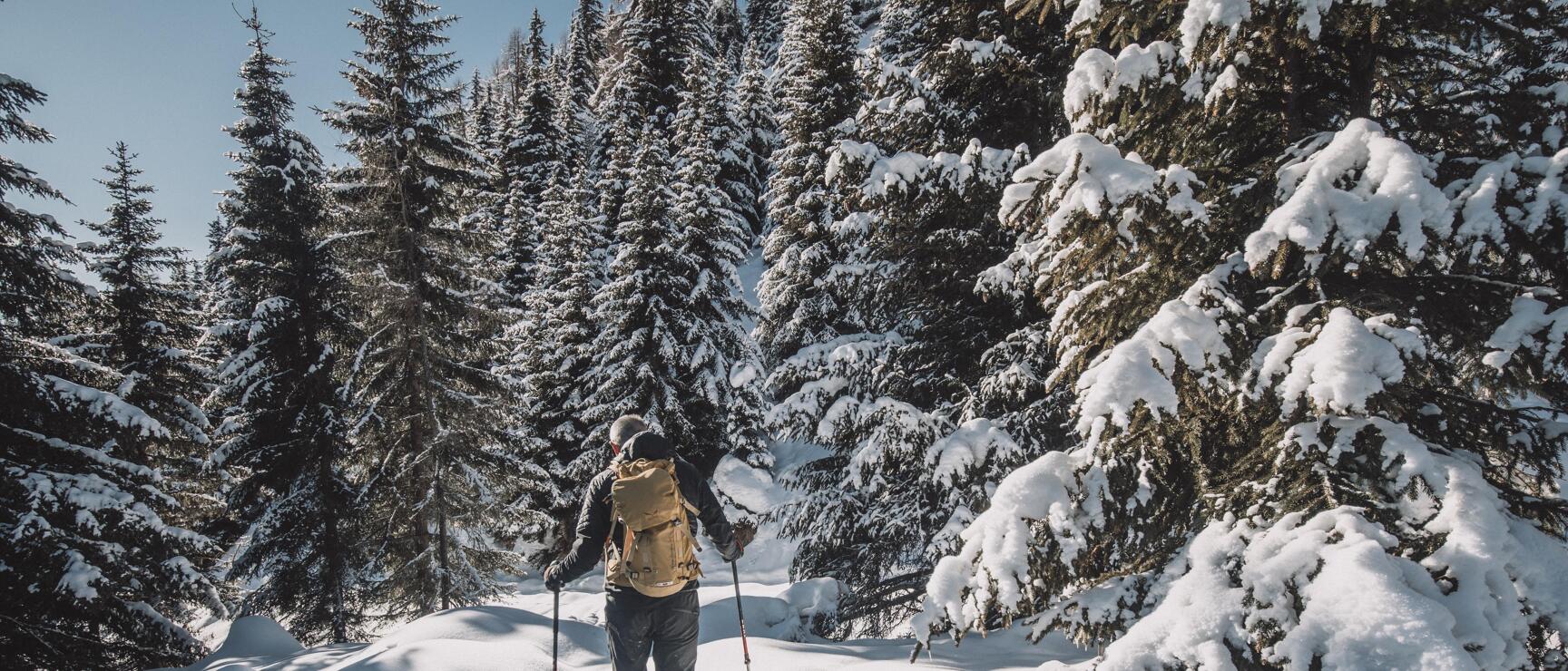
المشي لمسافات طويلة بأحذية الثلج في النمسا
المشي على طول المسارات الشتوية
يعتمد قرارك في القيام برحلة مشي بالأحذية الثلجية بمفردك، على المنطقة التي تنوي زيارتها، مستوى لياقتك البدنية، تجربتك السابقة، وكذلك حالة الطقس والثلوج. ولكن إذا اخترت القيام برحلة مع أحد حراس الحديقة الوطنية، فهناك فرصة جيدة لرؤية "الخمسة الكبار في جبال الألب": الوعل، النسر الذهبي، الطيهوج، الشمواه، ونسر اللحية. فهذه الحيوانات المراوغة نادراً ما تُرى في الشتاء، ولكن الحارس يعرف الأوقات والأماكن المثلى لرؤيتها، مثل حديقة هوهي تاورن الوطنية.
هؤلاء الحراس عادةً ما يكونون على دراية أيضاً بأسماء القمم التي يبلغ ارتفاعها 3000 متر (9800 قدم) والتي ترتفع قممها الوعرة البيضاء نحو السماء. هذا وتُعتبر كل من غروسغلوكنر وغروسفينيديغر، وهما أعلى القمم، من المعالم التي تبقى عالقة في الذاكرة حتى لدى الزوار لأول مرة. ومن الفوائد الإضافية لرحلة المغامرة بالأحذية الثلجية، هو الشعور الرائع بالسعادة مع تلاشي ضغوط الحياة اليومية تدريجياً.
المشي لمسافات طويلة بأحذية الثلج في فورارلبيرغ
المشي لمسافات طويلة بأحذية الثلج في تيرول
هل كنت تعلم أن..
... أحذية الثلج كانت موجودة بالفعل منذ حوالي 12000 سنة؟ فهذا متثبت في اللوحات الصخرية القديمة.
... النشاط الممتد والمعتدل للمشي بالأحذية الثلجية يعزز حرق الدهون؟
... التدريب على التحمل بالأحذية الثلجية يؤثر بشكل إيجابي على نظام القلب والأوعية الدموية؟
... في منغوليا، تم العثور على أحذية ثلجية عمرها 6000 عام؟ كانت عبارة عن ألواح خشبية ملفوفة بالفراء.
المشي لمسافات طويلة بأحذية الثلج في سالزبورغر لاند
المشي لمسافات طويلة بأحذية الثلج في كارينثيا
المشي لمسافات طويلة بأحذية الثلج في ستيريا
المشي لمسافات طويلة بأحذية الثلج في النمسا العليا
المشي لمسافات طويلة بأحذية الثلج في النمسا السفلى
على ارتفاع 2000 متر فوق سطح البحر، تُعد رياضة المشي بالأحذية الثلجية في منطقة راكس تجربة مميزة، إذ ينقل تلفريك راكس المتنزهين بكل سهولة إلى منطقة المشي، حيث تتوفر جولات إرشادية بصحبة مرشدين جبليين. كما يُنصح أيضًا بالجولات في منطقتي أوتشَر وهوخكار في إقليم موستفيرتل.